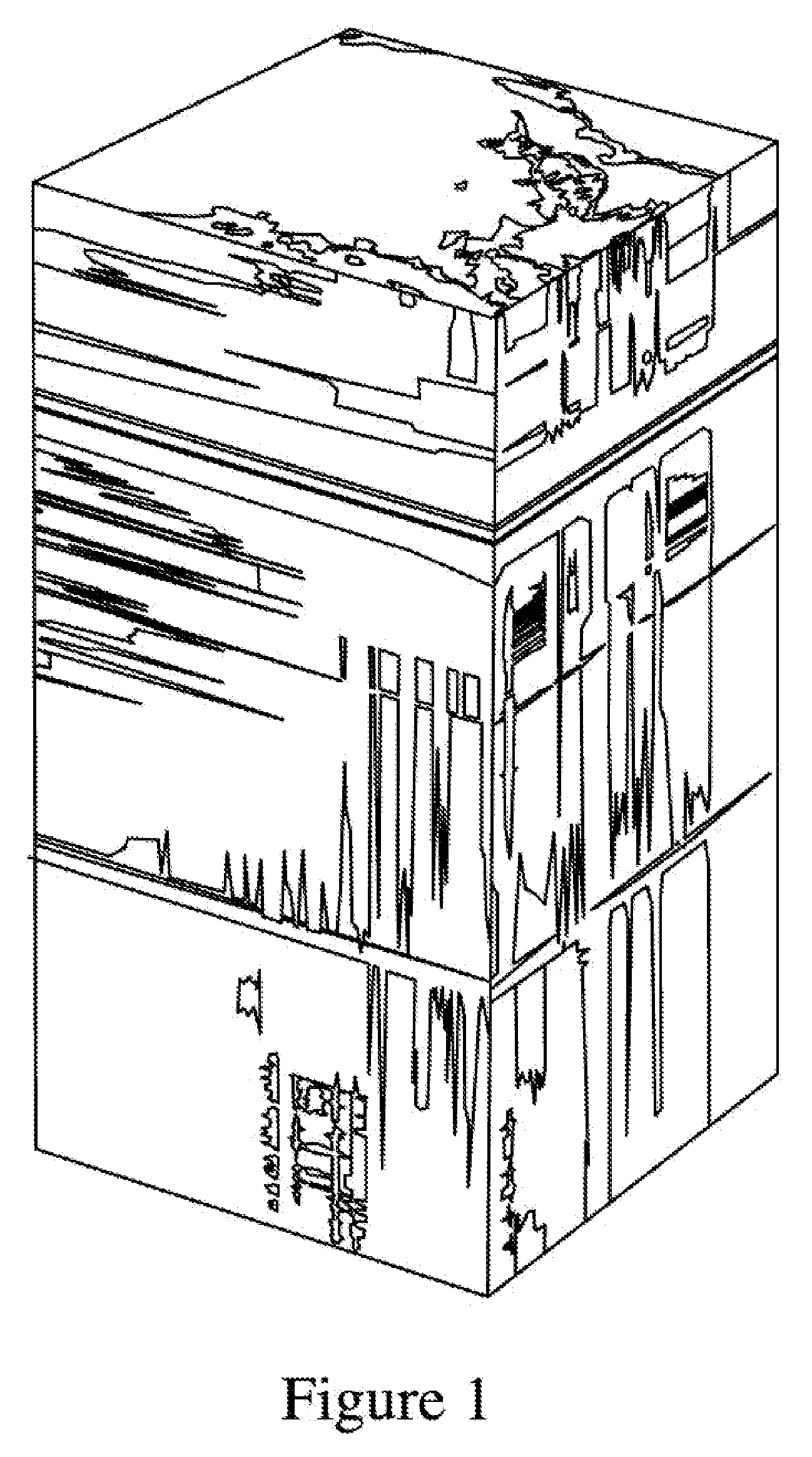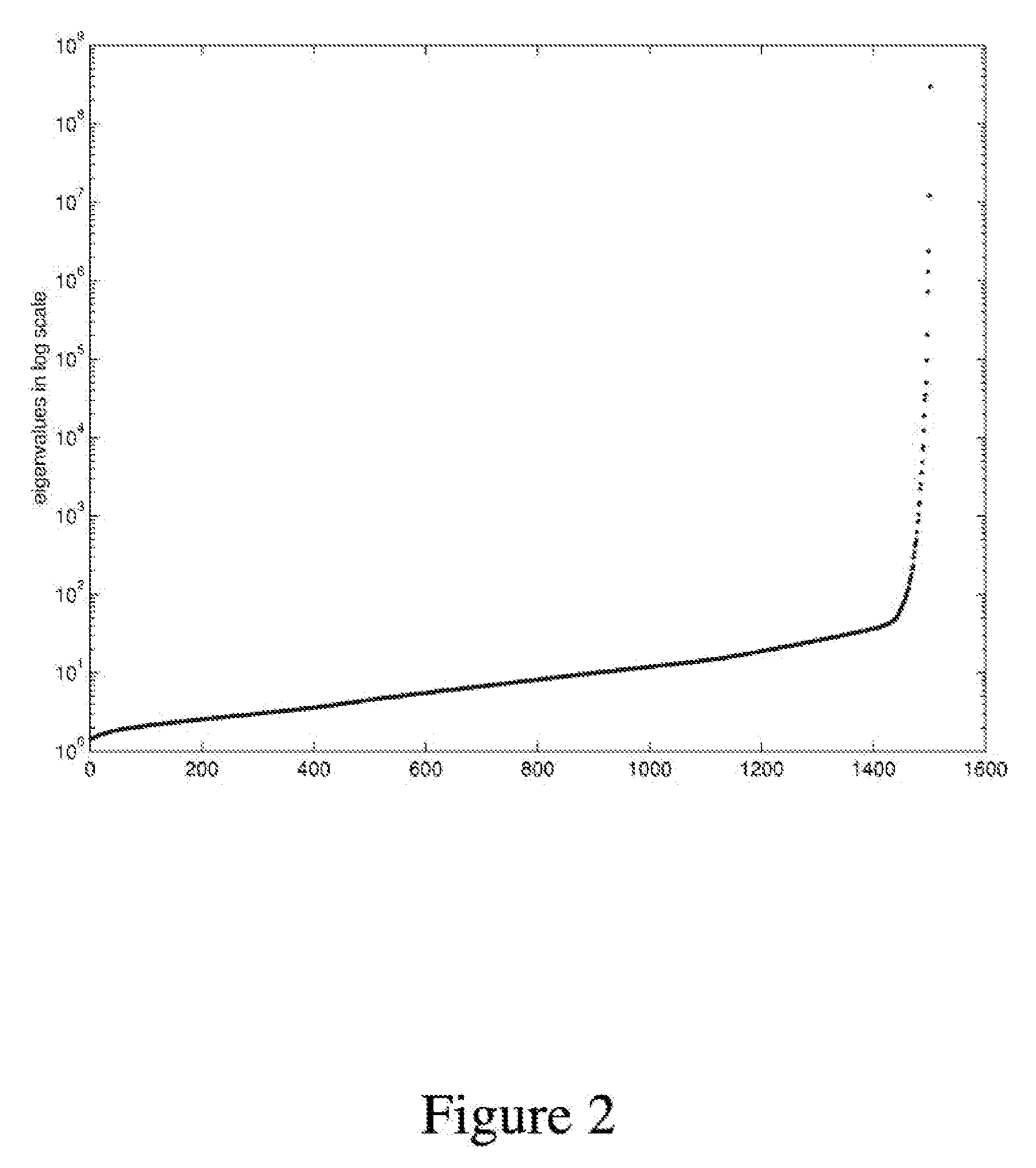Lossless compression algorithm for hyperspectral data
- Summary
- Abstract
- Description
- Claims
- Application Information
AI Technical Summary
Benefits of technology
Problems solved by technology
Method used
Image
Examples
Embodiment Construction
[0077]In the present invention, the approach to hyperspectral data compression exploits properties of hyperspectral imaging that are known a priori to achieve superior results over generic compression methods. There is an extensive literature on generic data and image compression. See, e.g., D. Salomon, Data Compression: The Complete Reference, Springer, New York, 2004 (third edition), incorporated herein by reference. All compression is based on implicitly or explicitly exploiting the statistical structure of the data. By accurate modeling and identification of properties special to hyperspectral imaging the present invention is able to obtain a more compact representation of the data. The primary assumptions on the measurements are: 1. there are a small number of physical processes significant for generating the spectral radiances; 2. the measured spectral radiances are highly correlated; 3. The correlations in both the spatial and spectral domain have a piecewise smooth component...
PUM
 Login to View More
Login to View More Abstract
Description
Claims
Application Information
 Login to View More
Login to View More - R&D
- Intellectual Property
- Life Sciences
- Materials
- Tech Scout
- Unparalleled Data Quality
- Higher Quality Content
- 60% Fewer Hallucinations
Browse by: Latest US Patents, China's latest patents, Technical Efficacy Thesaurus, Application Domain, Technology Topic, Popular Technical Reports.
© 2025 PatSnap. All rights reserved.Legal|Privacy policy|Modern Slavery Act Transparency Statement|Sitemap|About US| Contact US: help@patsnap.com



